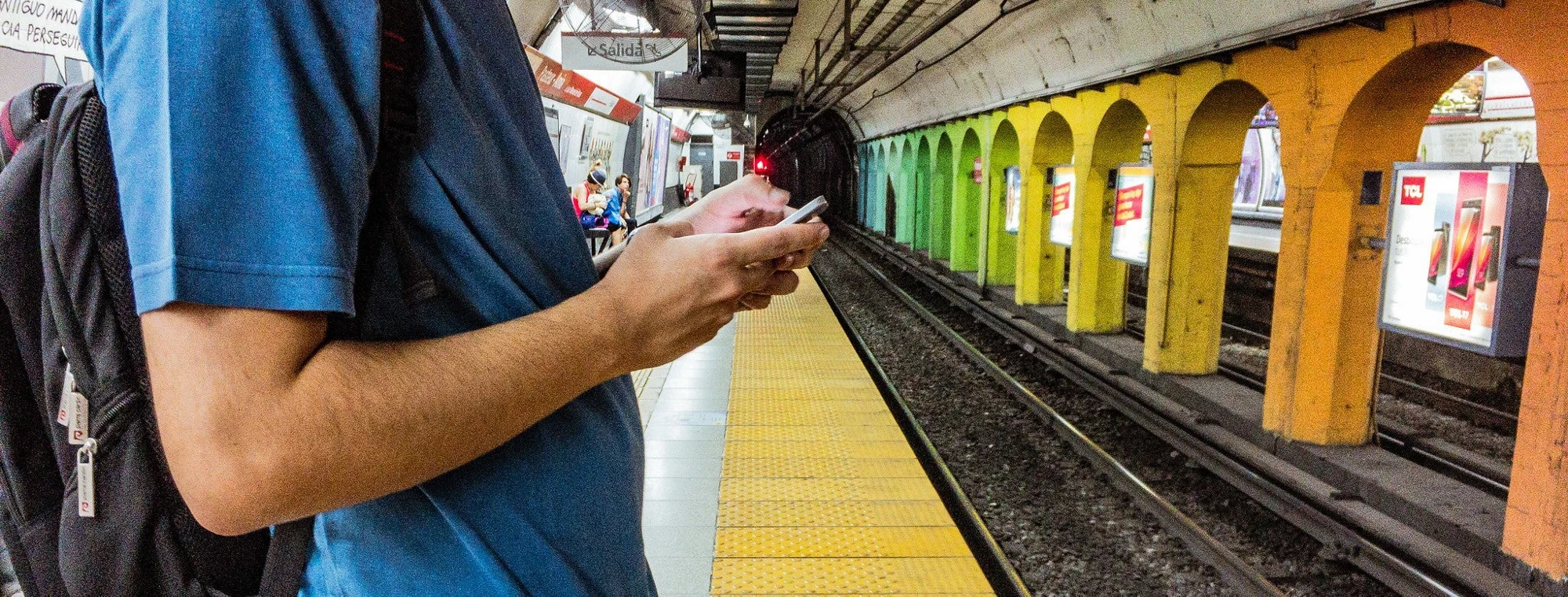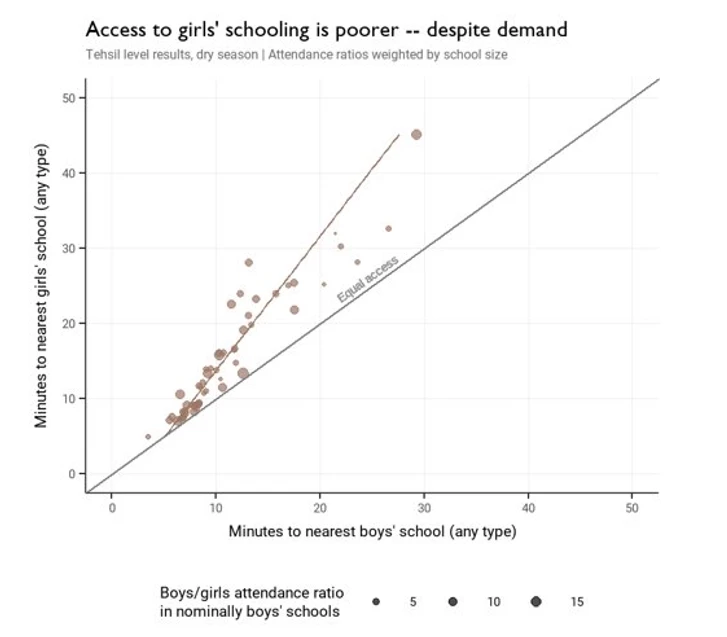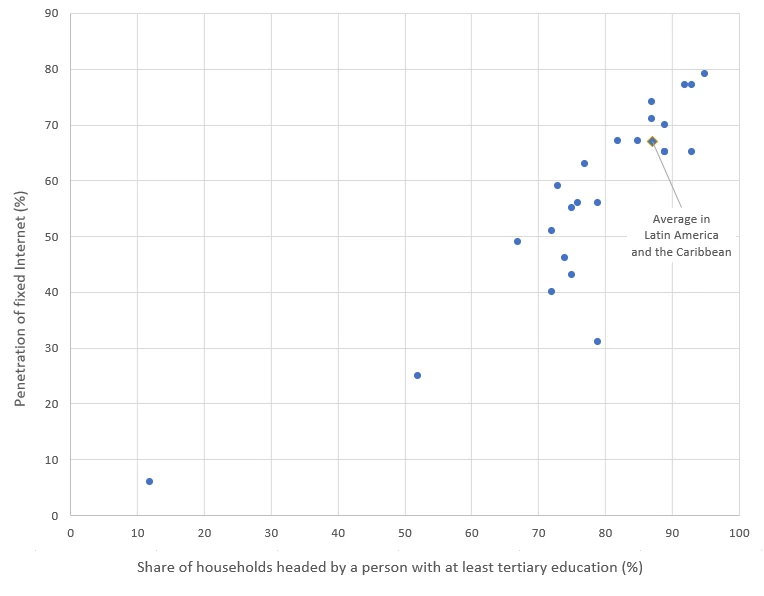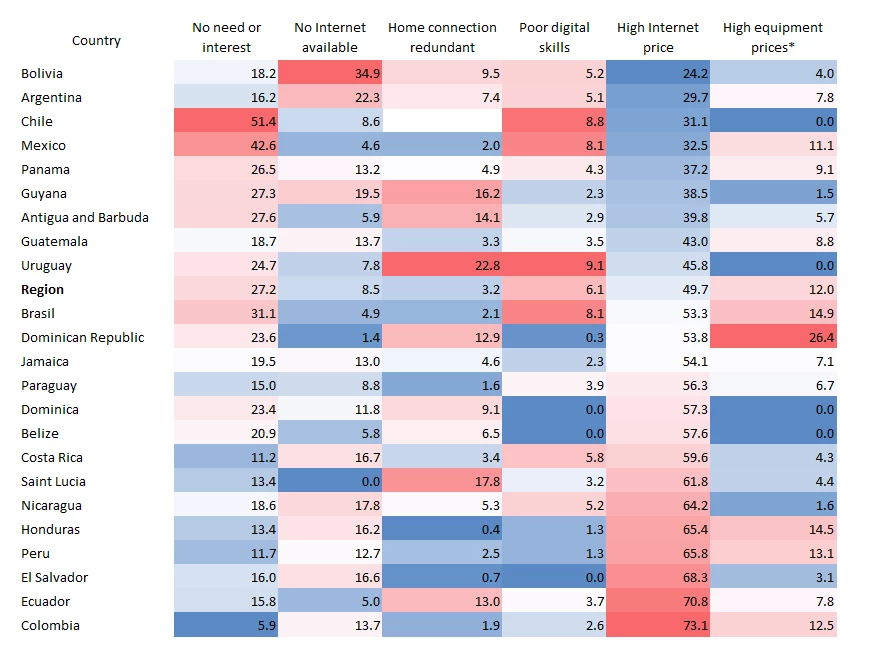 Hombre manipulando un teléfono celular en una estación de tren en la Ciudad de Buenos Aires.
Hombre manipulando un teléfono celular en una estación de tren en la Ciudad de Buenos Aires.
As digital tools have become essential in our daily lives, universal access to the Internet is ever more important to countries’ socio-economic development. It has been shown that higher connectivity to the Internet is related to higher labor force participation, employment mobility, job creation, and overall job growth. Internet access also enables access to critical public services like education and healthcare, strengthening economic and social resilience. Finally, digital technologies helped spur innovation in the reduced mobility environment brought up by the COVID-19 pandemic.
About three-quarters of the Latin American and Caribbean (LAC) population use the Internet. A recent World Bank note using household High-Frequency Phone Surveys (HFPS) across 24 countries in the LAC region sheds light on those being left behind and provides three main takeaways on digital access for households in the region.
Households with higher levels of education are more likely to access the Internet, using it for remote work and education
Internet use varies considerably by education level, which can accentuate socio-economic inequalities. Based on data from the HFPS, about 84 percent of households headed by a person with at least tertiary education have fixed Internet connections at home, while only 50 percent of households whose head has only primary education do . Differences in education also affect online activities. Remote work and education were the main purposes of Internet use among households whose heads had at least tertiary education. Meanwhile, instant messaging was the most prevalent use among households with a respondent with only primary education.
Fixed Internet penetration and share of households headed by a person with at least tertiary education in Latin America and the Caribbean
Source: World Bank and UNDP LAC HFPS II (Wave 1) 2021 data. Authors’ calculations. Note: LAC average refers to the average among countries in the HFPS sample
Access to the Internet in LAC happens predominantly through mobile phones, with fixed connections still far from being universally available
Mobile broadband via smartphones is the primary means for households accessing the Internet in Latin America and the Caribbean . Notably, access does not differ significantly across locations. On average, 95 percent of the region’s households in urban areas have at least one member who has access to a smartphone, compared to 93 percent of rural households.
Two-thirds of LAC households have the fixed Internet connections needed to conduct high-capacity data activities such as video-based calls for work or education. Though these estimates may suggest an improvement from the regional pre-pandemic average, disparities across countries persist (Figure below). Data from other sources also point to an increased, yet limited access in the region: the average household penetration of fixed Internet among HFPS countries is 58%, compared to 47% in 2019.
Percentage of households with fixed Internet connection in Latin America and the Caribbean

Source: World Bank and UNDP LAC HFPS II (Wave 1) 2021 data. Authors’ calculations.
High costs of data deter households from accessing the Internet. High fees and poor-quality service affect those with access
About 50 percent of households not connected to the Internet in Latin America and the Caribbean pointed to data affordability as the main obstacle to being online. This is probably due to a combination of high data prices and lower income. One in three households reported an increase in spending on data packages and Internet connections during the pandemic, likely driven by an increased need to access digital tools for education, communications, and work.
Percentage of unconnected households reporting various obstacles to connectivity in Latin America and the Caribbean
Source: World Bank and UNDP LAC HFPS II (Wave 1) 2021 data. Authors’ calculations.
*Equipment refers to computers, tablets, or smartphones.
Once online, Internet users face low-quality Internet connections, frequent power outages, and high service fees. About 55 percent of households reported poor Internet quality as a challenge for Internet use and more than a third (37 percent) considered power outages as a key issue. High costs were identified as the third major obstacle in Internet usage (30 percent).
Policy recommendations on Internet connectivity
No doubt that the region requires a faster Internet connection to promote inclusive socio-economic development. So how could governments in Latin America and the Caribbean help bring online those who are left behind? Here are three priority areas.
- Firstly, fostering competition and infrastructure investments in the middle- and last-mile networks would help the uptake of fixed broadband connections whose quality is necessary to perform online activities such as remote working or e-learning. In parallel, improving the power grid in rural areas will be important for guaranteeing future connection stability.
- Secondly, policymakers should address data affordability and quality of service. Expensive fees, together with poor service quality, represent major obstacles for wider Internet use in LAC, particularly among low-income segments of the population. Policies that promote competition are essential and should be considered in all countries but may not be enough to make prices affordable to the poorest households. To support marginalized segments of the population, governments may need to significantly scale up relevant funding schemes (such as subsidies for services and devices) to increase access.
- Finally, the large digital gap between households with low- and high-educated members highlights the risk of widening existing inequalities in the region as only the latter group is effectively able to leverage digital opportunities. Hence, governments and the private sector could support an inclusive digital uptake by promoting targeted digital skills training.






Join the Conversation